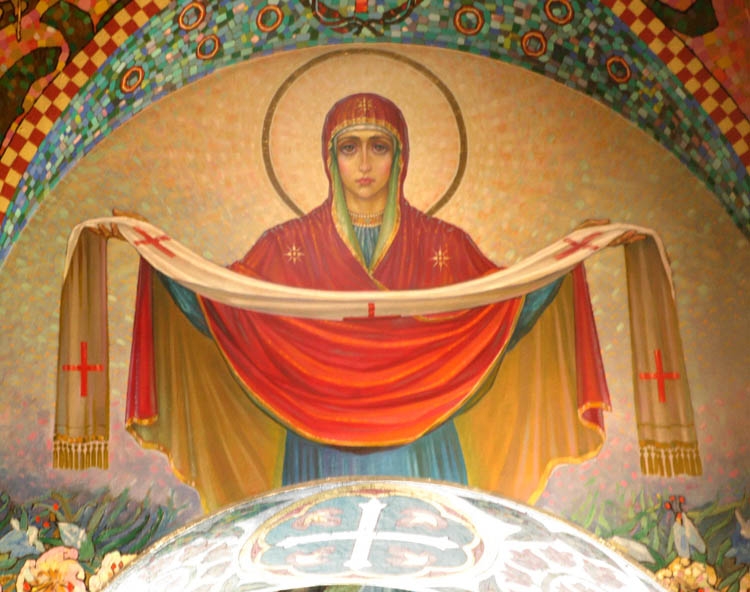
Name of the holiday , Feast of the Protecting Veil of the Mother of God, comes from the word cover up – protector of the earth.
In the pre-Christian era, this holiday was dedicated to the Meteorological divinity responsible for covering ground with hoarfrost.
People associated the frost covering the land with a cover on the heads of the girls. So tying the head of the bride at a wedding meant marriage. Girls beg God of Protecting Veil to bestow them with beautiful hair so that young people fall in love with them and soon to marry.
With the coming of Christianity, the church tried to adapt this pagan holiday, in accordance with the Christian canons. Christian giving states that: "In the Wallachian monastery of Constantinople, there were many Greeks, who prayed that God would deliver them from their enemies. At night the Elder of the Monastery Andrew came out the monastery and looked at the sky, he saw the Blessed Virgin Mary among the saints who prayed to God for the entire salvation of the human race. Holy Mother of God took the cover off the head and spread it over the Christians who were in the monastery. In the morning, the whole town knew about the miracle seen by St. Andrew. From that day to commemorate the miracle of the Blessed Virgin Mary the feast is called - Protecting Veil of the Mother of God.
In many localities this day is considered also as the temple holiday of the village. So in Chisinau the Protecting Veil of the Mother of God holiday coincides with the city holiday.





